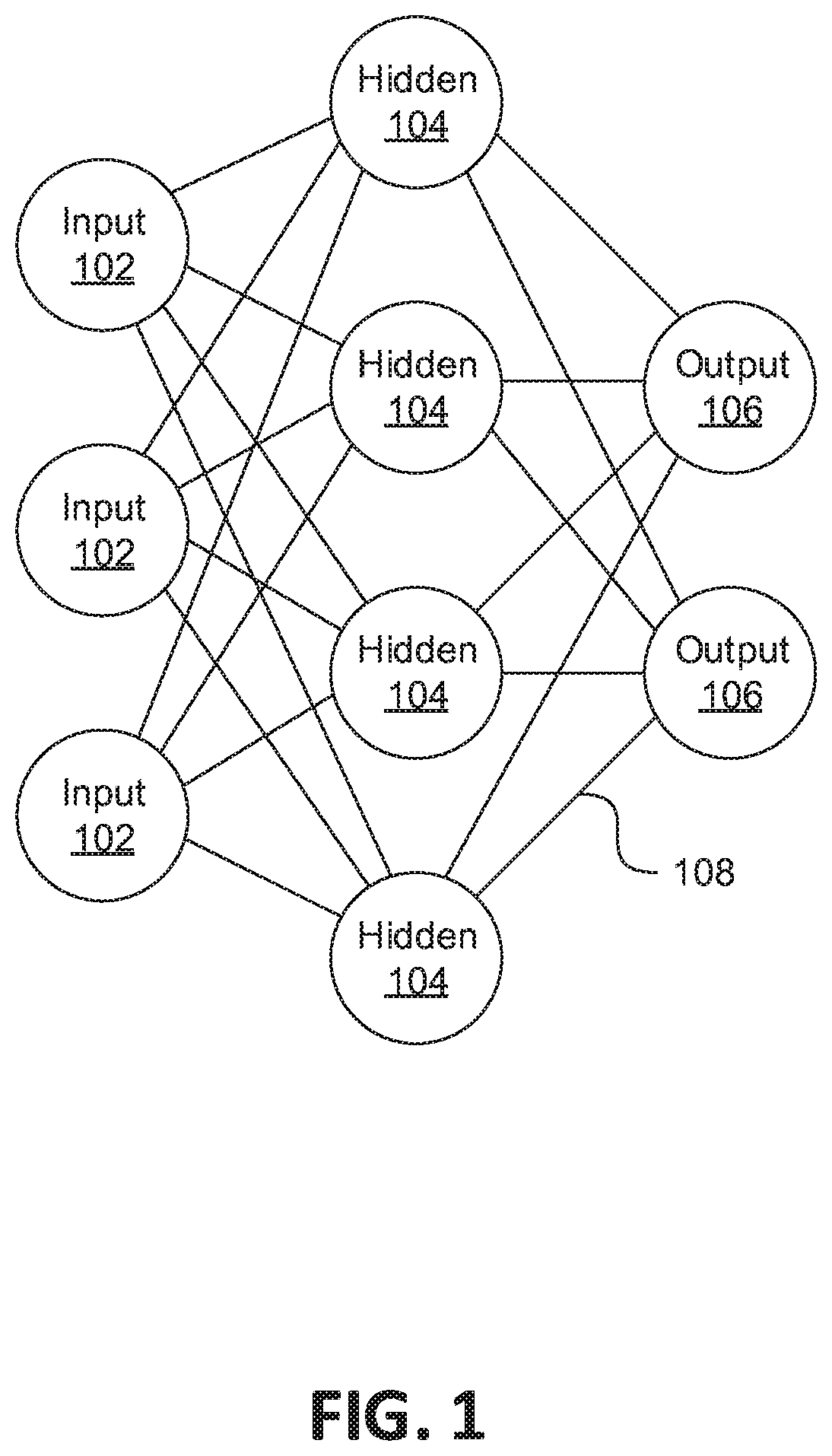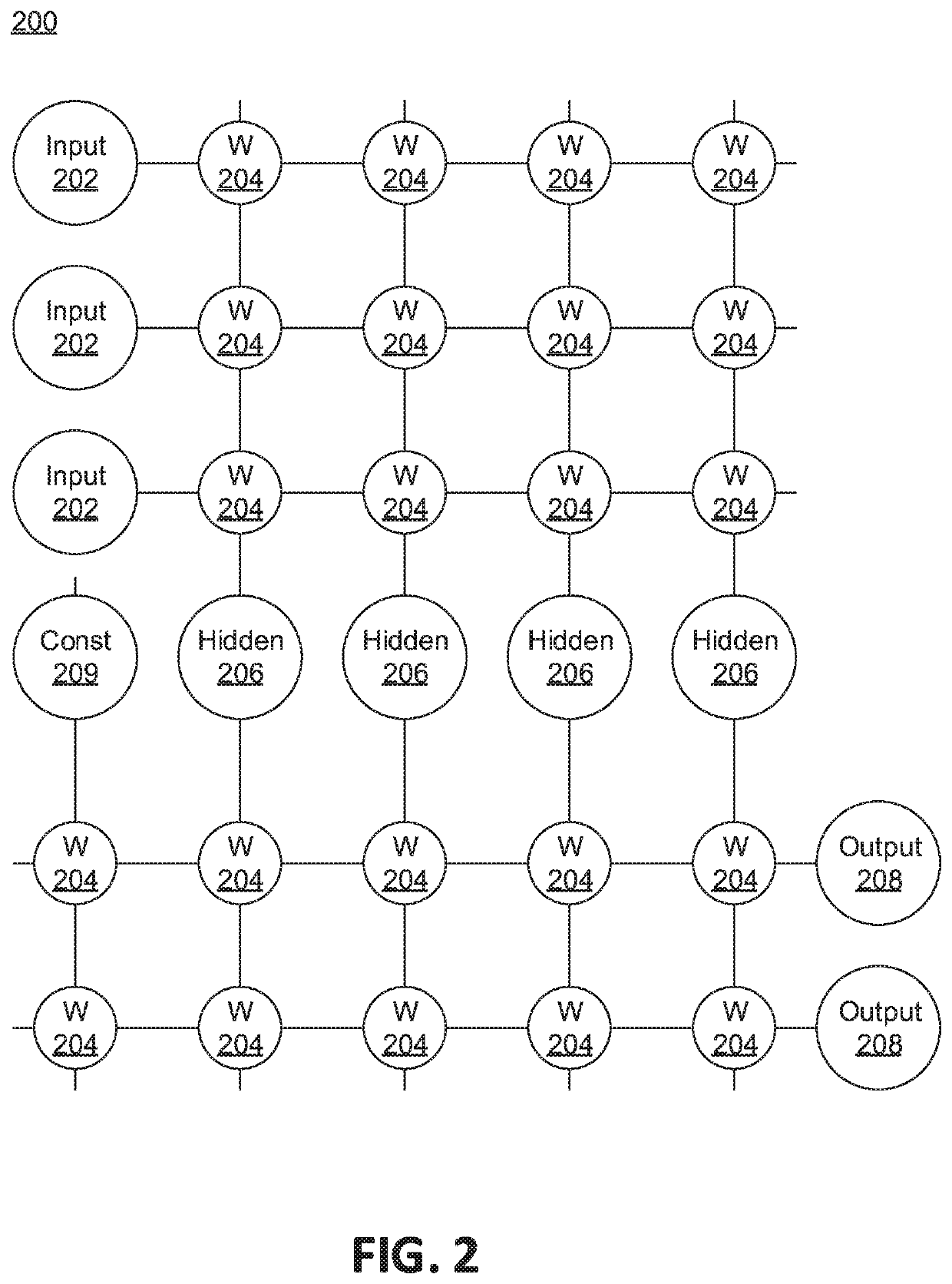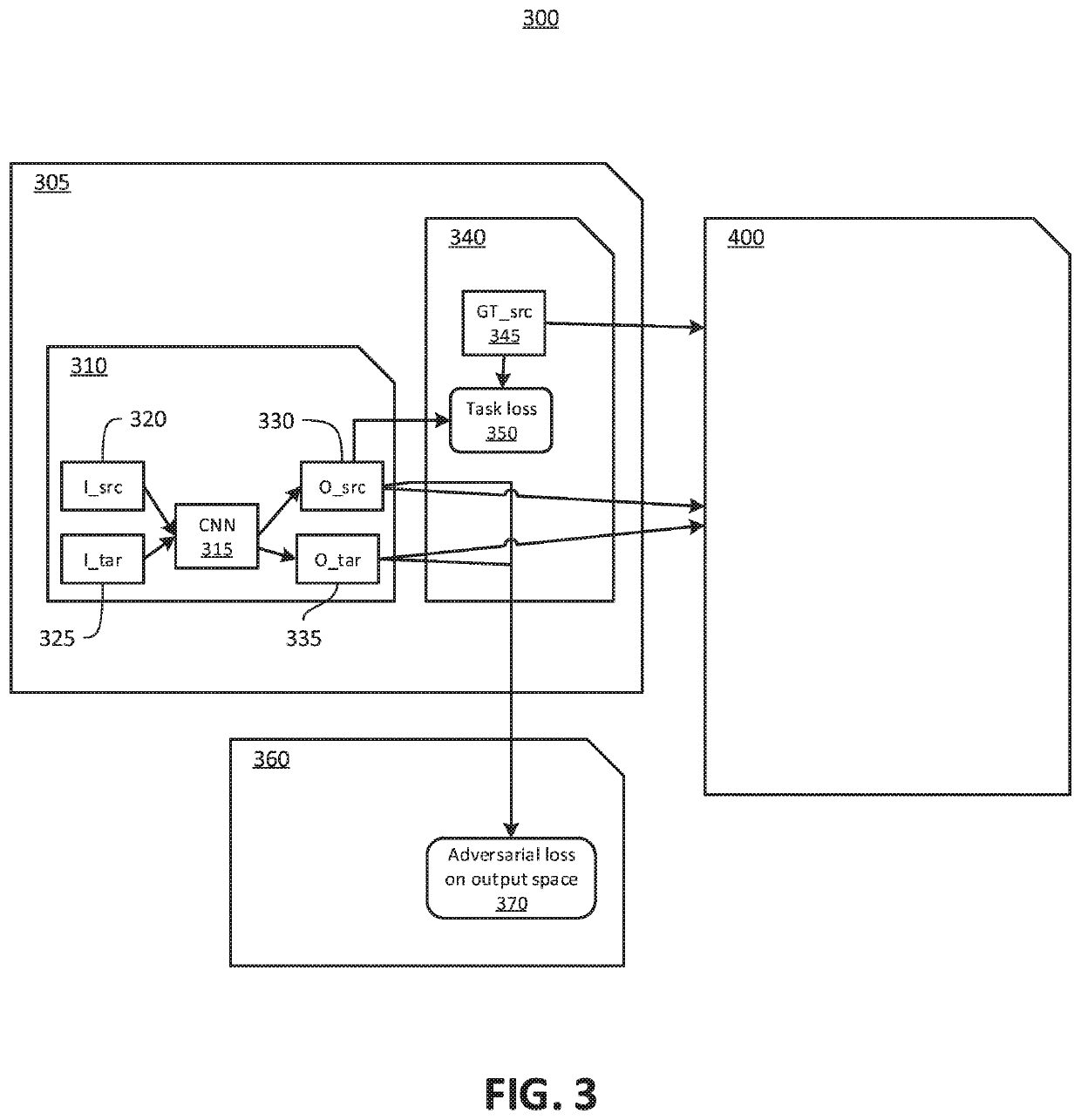Domain adaptation for structured output via disentangled representations
a technology of disentangled representations and domain adaptations, applied in the field of domain management, can solve problems such as laborious and expensiv
- Summary
- Abstract
- Description
- Claims
- Application Information
AI Technical Summary
Benefits of technology
Problems solved by technology
Method used
Image
Examples
Embodiment Construction
[0014]In accordance with the present invention, systems and methods are provided for determining structured output via disentangled representations. The system receives a ground truth of a source domain. The ground truth label patches are clustered into K categories, which are then used as additional classification loss on the label space and encourage the different types of structures in the labels to be separated. Consequently, the underlying feature representation gets disentangled
[0015]Embodiments disclosed herein cluster label patches and introduces a different form of supervision for the convolutional neural network (CNN) that is to be trained and enables additional regularization between the source domain and a target domain. The process increases the quality of feature representations when compared to systems that do not use the method for determining structured output via disentangled representations. Regularization is a technique that makes slight modifications to a learni...
PUM
 Login to View More
Login to View More Abstract
Description
Claims
Application Information
 Login to View More
Login to View More - R&D
- Intellectual Property
- Life Sciences
- Materials
- Tech Scout
- Unparalleled Data Quality
- Higher Quality Content
- 60% Fewer Hallucinations
Browse by: Latest US Patents, China's latest patents, Technical Efficacy Thesaurus, Application Domain, Technology Topic, Popular Technical Reports.
© 2025 PatSnap. All rights reserved.Legal|Privacy policy|Modern Slavery Act Transparency Statement|Sitemap|About US| Contact US: help@patsnap.com



